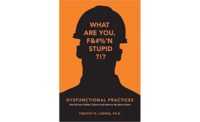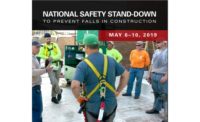According to OSHA, one in five deaths in 2017 were in construction with what it calls the “Fatal Four.” These are accidents in construction caused by falls, being struck by objects, electrocution, and caught-in/between.
The first overlooked worksite safety practice is awareness. If employees are not made aware of the dangers they face in the workplace, the burden falls on management to ensure they do.
The next issue is managing stress, which might not be obvious at first glance, but it is extremely relevant in dangerous environments. Being hyperaware can make workers feel stressed.
Some of the other overlooked worksite safety practices are effective communication, physical fitness, mishandling volatile materials, minimizing worksite distractions, innovation, and transparency.
When it comes to reporting accidents on job sites, a company must be fully transparent. Covering up incidents not only damages the reputation of the company, but of the industry as a whole. And at the end of the day, there are too many people on job sites to cover up an accident for long.
Progressive Safety Equipment goes on to say some jobs carry an obvious risk while others are not as obvious, but they still require clear safety guidelines. The key is identifying what the dangers are and implementing policies so employees follow them at all times.
Eight overlooked work site safety practices leading to falls:
- Lack of Awareness
- No Stress management
- Lack of effective communication
- Physical fitness
- Mishandling materials
- Minimizing work distractions
- Lack of using innovative technology
- Lack of transparency
When slip and fall cases keep happening, it’s your responsibility to investigate further and get to the root of the problem. Only by uncovering the real causes, you can actually find an effective solution and provide tour staff with a safe and risk-free work environment.
Upon a bit of research from your part, you will discover that a vast part of slips, falls and trips – same-level ones – are usually triggered by unsafe floors. From wet walkways and damaged floor surfaces to spills and sleepy mats and rugs, there are various floor-related issues that stand as the main cause of this sort of unpleasant situation. While the problem mentioned here is quite obvious, you would be surprised to discover just how many companies fail to seek a solution.
When a reduction in the number of slip and fall claims is sought after, businesses often focus on requesting staff to wear appropriate footwear and put together a safety training program instead of actually upgrading floor surface quality. So, as an initial effort from your part, you should look into updating walking surfaces, and ensuring their level of safety.
Taking one step further and putting more of your effort and attention into the subject means considering pursuing an actual audit on this issue.
For a lowering of slip and fall incidents in industrial workplace environments, an audit that targets entrance and transition areas, as well as high-traffic spaces, together with maintenance and cleaning procedures is recommended. What an audit will do for you is actually show you where the major risks are. Identifying the most common trouble areas will give you the opportunity to take prevention to optimal levels.
It’s preferable if you partner up with a team of professionals who are able to easily spot any issues here and direct you towards proper solutions, instead of carrying out the audit on your own. It’s easy to overlook a hazardous floor spot, if you don’t have much experience in this department. High-traffic, transition and entrance areas need to all be assessed by the book. Permanent and temporary stairways should also be inspected for potential issues.
A comprehensive audit should contain a wide range of actions, including the placement of materials and tools, cleaning timing, and in-house maintenance procedures. A floor safety audit that is done perfectly can clarify many aspects and allow you to strengthen prevention.
You will need to put together an extensive and accurate floor safety plan, and you will need it to have it in writing, in order to keep things organized and effective. Identify all potential hazards and have written guidelines on how you will be planning to keep your employees safe from incidents of this sort. You should make sure your employees are on-board with the entire system, are aware of maintenance and cleaning hours. Discuss with your collaborators in the housekeeping and maintenance departments, and let them know about your floor safety requirements.
Order custom-sized mats for the areas in which the audit has shown hazards are present. Seek carpets that are designed out of proper quality materials, suitable for this purpose. Get your housekeeping schedule in-check and have it post it somewhere for everyone to see. Get all of these steps on paper, and follow them accordingly.
To maximize your efforts, you should also use proper signage to let your staff know when they should be extra careful when walking around company premises. A sign that indicates uneven ground, a gap, or slippery surfaces can actually prevent the occurrence of a trip or slip.
Use signs and reflective tape to highlight any hazardous areas. Protecting your business from personal injury claims can sometimes be easier than you have thought, you just need to be a bit more attentive of a few important aspects.
A slip and fall claim made by one of your employees can truly cause you distress and numerous inconveniences. It’s certainly far more advantageous to seek prevention and make sure you have taken all the measures necessary to at least reduce accidents of this sort. With just a few necessary adjustments, you can obtain an actual improvement, and prevent yourself from dealing with cases that might trigger a wide range of concerns.
Look over these methods carefully, and use each one to your advantage. You will be keeping your employees safe and unharmed, and your company protected against liability issues.
Source: www.bnmagazine.co.uk



